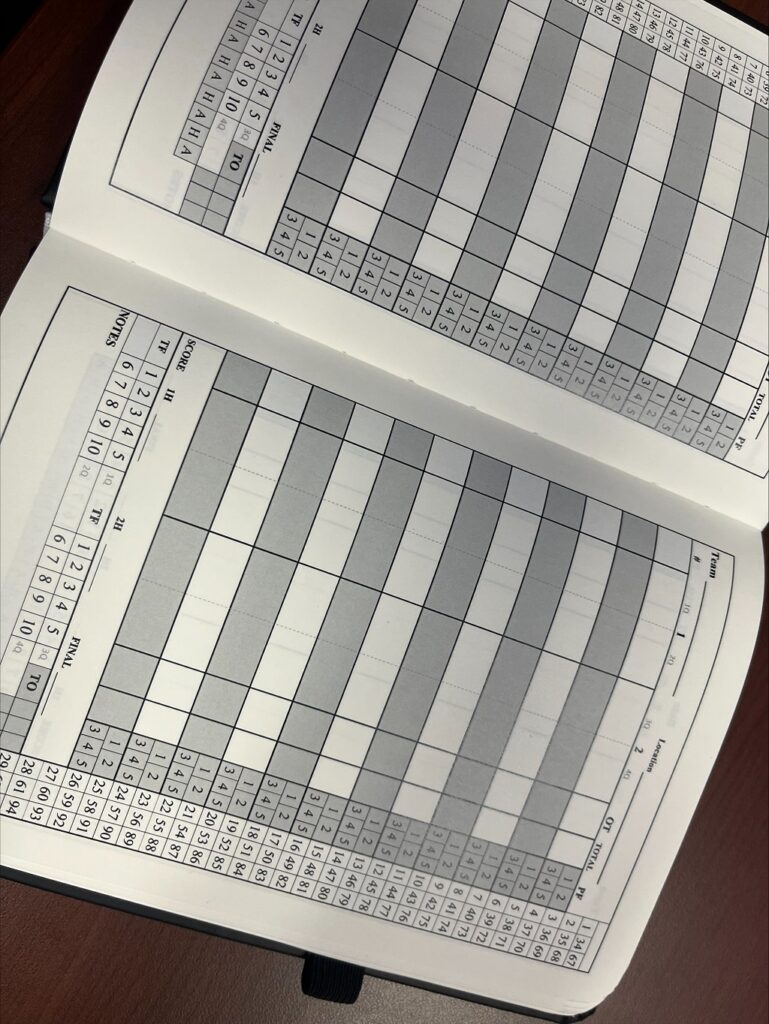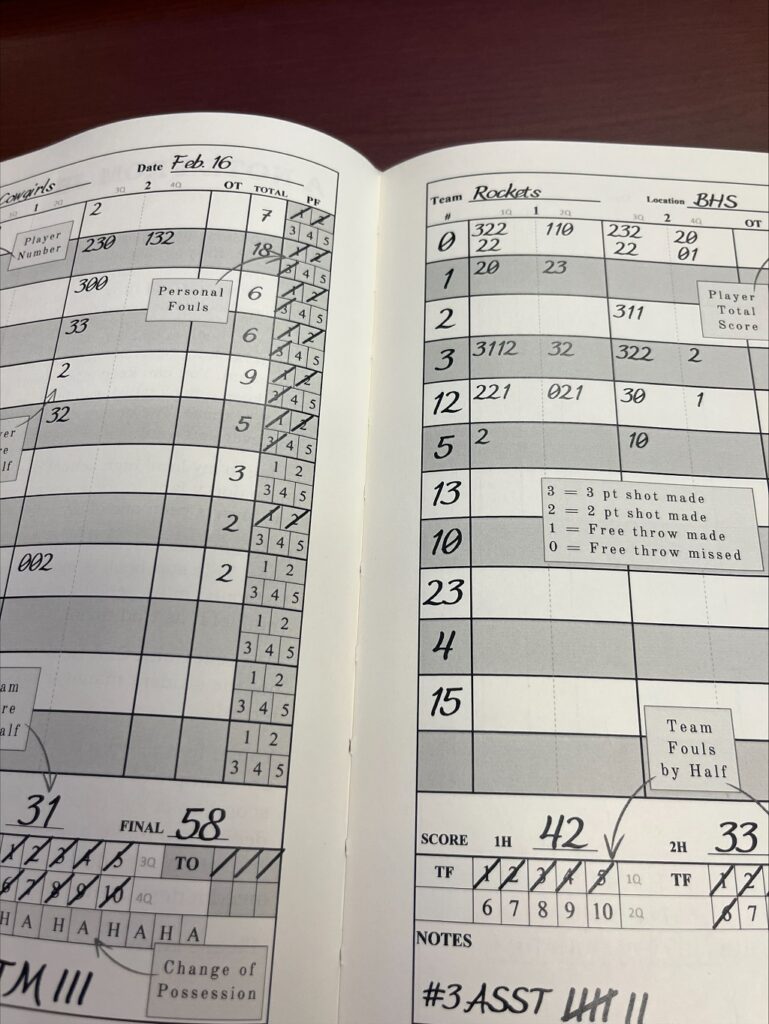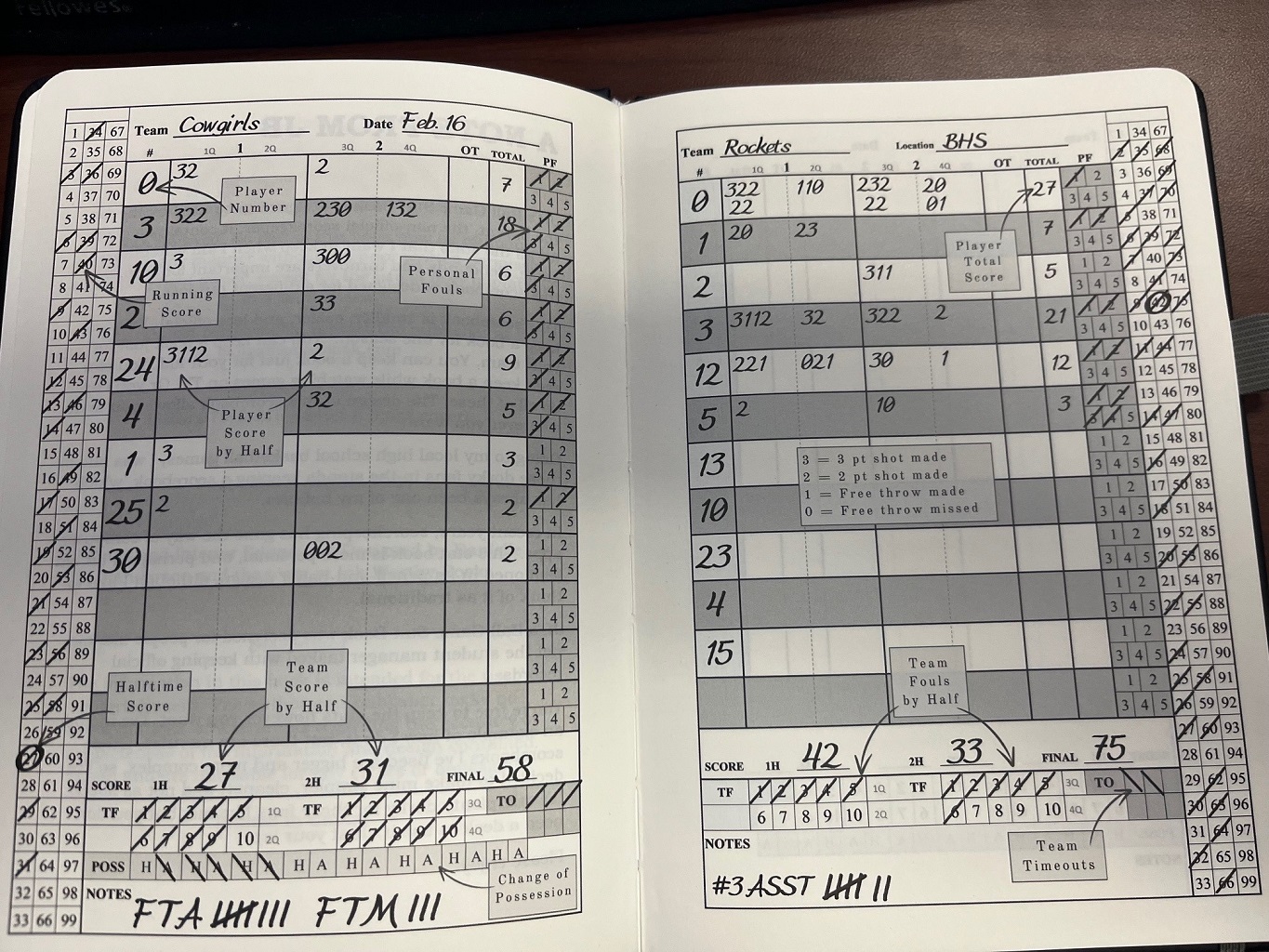How To Keep Score
Follow these easy instructions to keep score JB’s way.


This is how I do it, but there are many ways to do it and all of them are fine.

How to Keep Score in Basketball: A Simple Guide for Fans and Parents
Keeping score at a basketball game doesn’t have to be complicated. Whether you’re a parent tracking your child’s performance or a fan who wants to stay more engaged, using a basketball stat book can make following the game more exciting and informative. In this guide, we’ll break down the basics of keeping score so you can confidently track every basket, foul, and free throw.
Why Keep Score in Basketball?
A basketball scorebook isn’t just for coaches—it’s a great tool for fans who want to:
– Stay actively engaged in the game
– Track a player’s stats over the season
– Learn more about the flow of the game
– Keep a personal record of memorable moments
With the right scorebook, you’ll have a clearer picture of how each game unfolds.
What You Need to Keep Score
To effectively track basketball stats, you’ll need:
1. A basketball stat book (like JB’s Ball Game Stat Book)
2. A pen or pencil for easy updates
3. A basic understanding of basketball scoring
Understanding the Scorebook Layout
Most basketball scorebooks have sections to record key stats, including:
– Team rosters (player names and jersey numbers)
– Field goals (2-pointers and 3-pointers)
– Free throws attempted and made
– Fouls committed
– Assists, rebounds, steals, and turnovers
– Quarter-by-quarter scoring breakdowns
Step-by-Step Guide to Keeping Score
1. Set Up Your Scorebook
– Before the game starts, write down the team names, date, and location. Then, fill in the player names and their jersey numbers.
2. Track Each Basket
– A two-point field goal is marked with a simple “2” next to the player’s name.
– A three-point shot is recorded with a “3.”
– Free throws are tracked with a separate column for attempts and makes.
3. Record Fouls
– Each time a player commits a foul, mark it next to their name. Tracking fouls is crucial because players with excessive fouls can be disqualified.
4. Note Assists, Rebounds, and Turnovers
– Many scorebooks include extra sections to track these additional stats, helping to paint a complete picture of the game’s progress.
5. Tally Scores at the End of Each Quarter
– At the end of each quarter, sum up the points for each team. This helps you keep an accurate running total and follow the game’s momentum.
Tips for Easy Scorekeeping
– Use shorthand to make tracking faster (e.g., “FT” for free throws, “AST” for assists).
– Stay focused on the action to avoid missing plays.
– Review your entries during timeouts or breaks to ensure accuracy.
– Use a high-quality scorebook designed for ease of use, like JB’s Ball Game Stat Book.
Get the Best Basketball Scorebook
If you’re looking for an easy-to-use basketball scorebook for fans and parents, check out JB’s Ball Game Stat Book at ballgamestatbook.com. Designed for beginners and experienced scorekeepers alike, it’s the perfect companion for every game.
Final Thoughts
Keeping score in basketball doesn’t have to be intimidating. With a little practice and a good scorebook, you’ll be able to track every exciting moment like a pro. Whether you’re following your child’s progress or just want to stay engaged, keeping a basketball stat book is a great way to enhance your game-day experience.
Ready to order your JB’s Ball Game Stat Book? Start scorekeeping today and make every game more fun and memorable!
